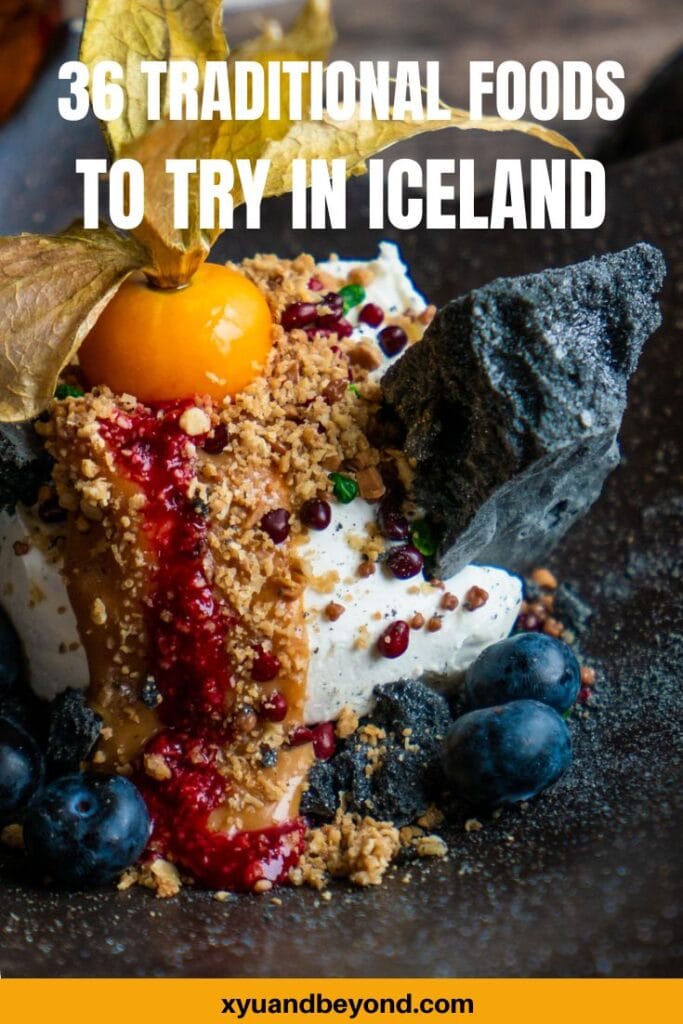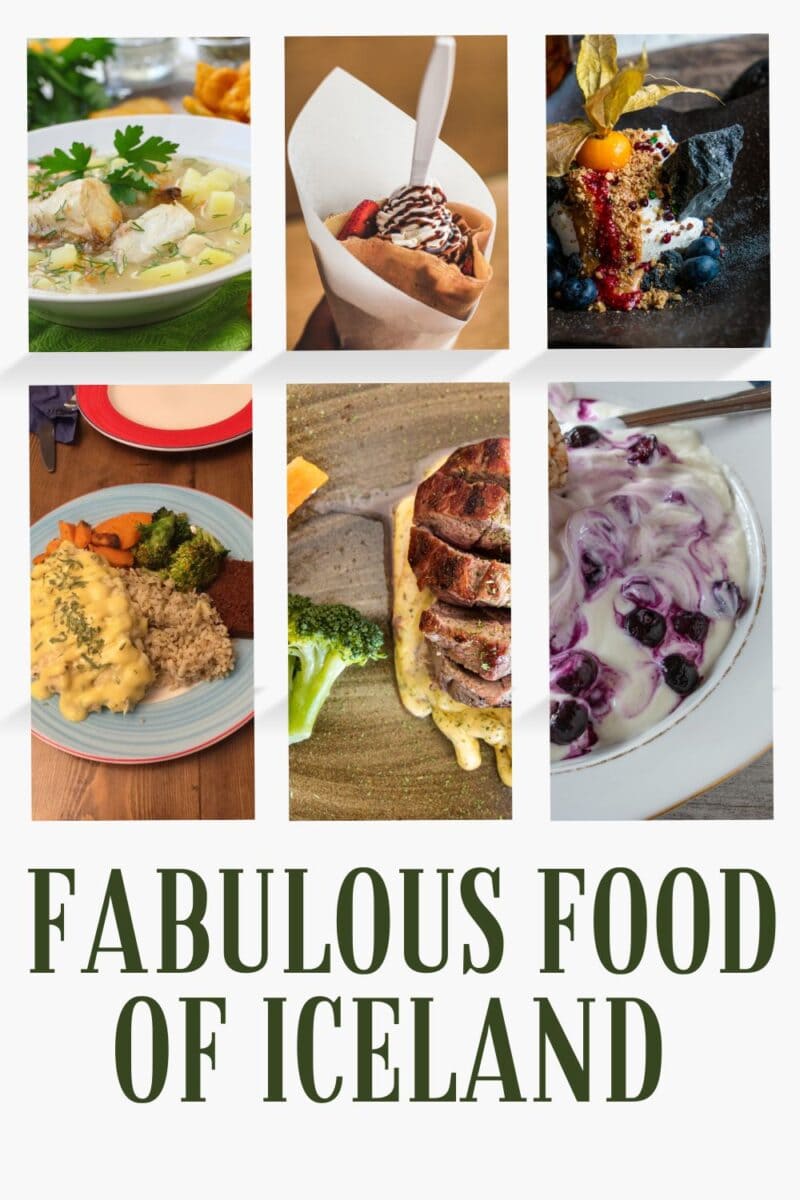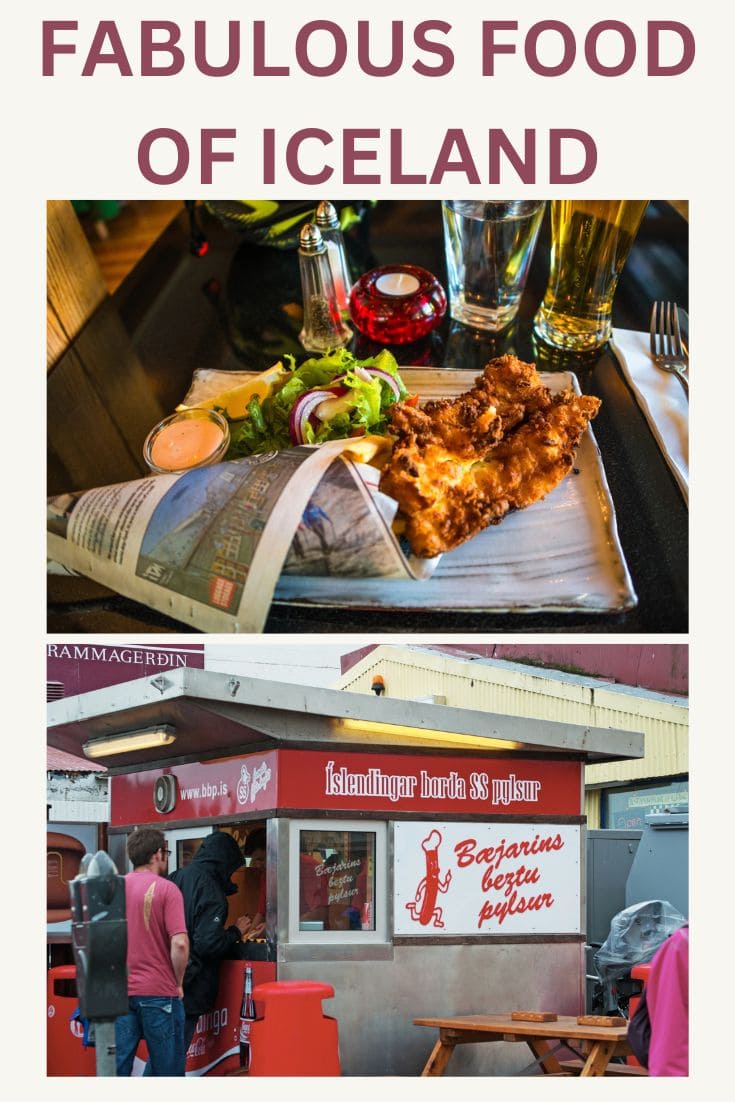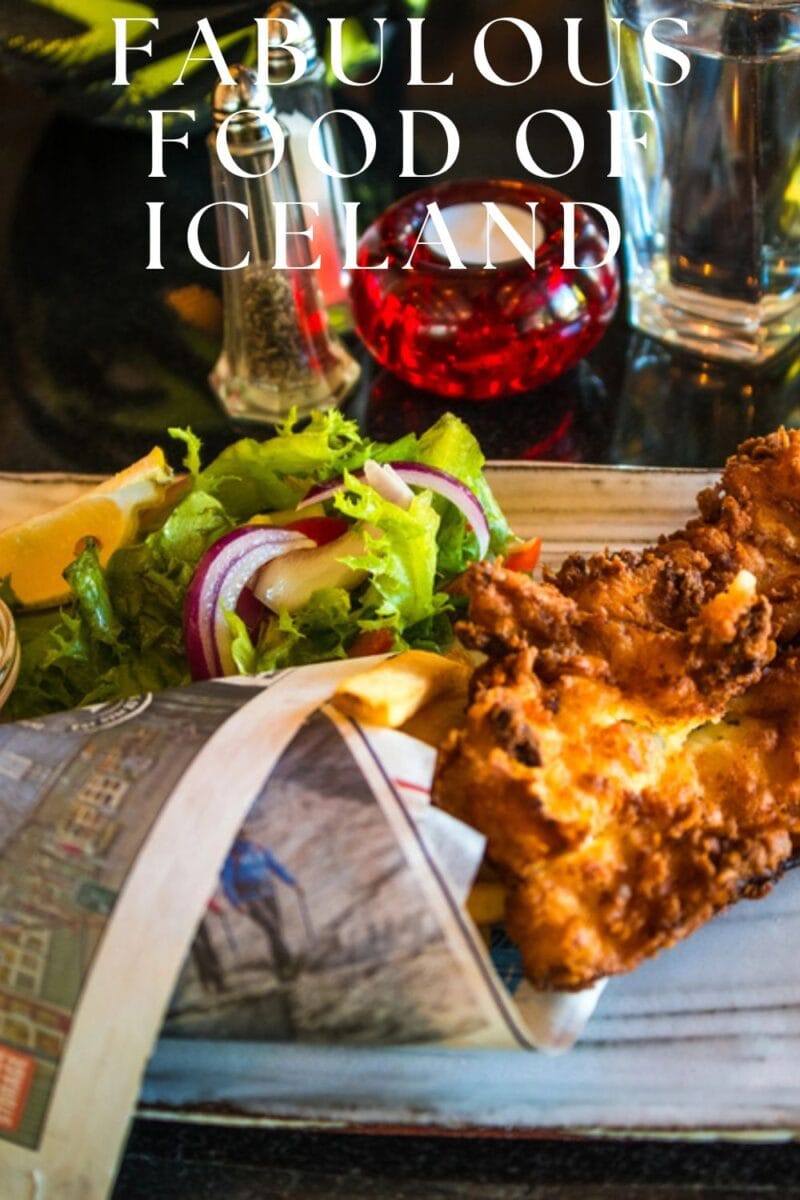Icelandic food all the best food in Iceland
Iceland is not really a place that most folks think of as a leading culinary destination. The traditional food of Iceland was severely limited in the past by a lack of resources, as a result of being located in the Arctic Circle.
This remote place makes it difficult to import and export food and goods and this is reflected in the cuisine of Iceland. Having said that the new Nordic cuisine, of which Icelandic chefs are a part is changing the way we view food and food tourism in countries like Iceland.
Contemporary chefs in Iceland excel at crafting superb dishes by blending the sea’s abundance with herbs and spices indigenous to Icelandic landscapes. Reykjavik offers a variety of delectable fish and traditional Icelandic cuisine.
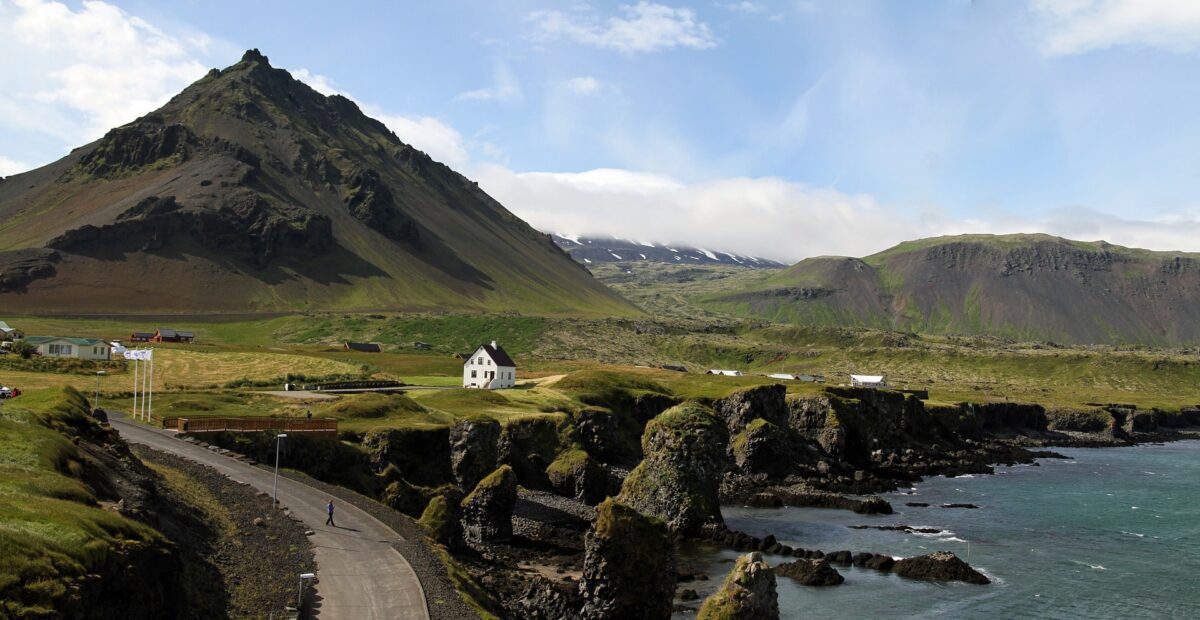
Iceland is surrounded by the incredibly rich North Atlantic Ocean and the country itself when it comes to agriculture has taken great advantage of geothermal energy and new technology. This has given Iceland the ability to have freshly-grown, locally sourced ingredients year-round, but the traditional food of Iceland is still eaten every day and is popular with the tourists who come here.
- Icelandic food all the best food in Iceland
Xyuandbeyond is reader-supported. When you buy through links on our site, we may earn an affiliate commission. You can read my privacy policy here.
What is the traditional food in Iceland?
What do Icelanders eat? Icelandic meals are usually meat-based due to the need for high protein to survive a rugged environment and the fact that there wasn’t arable land for farming in the past. These days Icelandic cuisine still focuses on traditional meats such as fish, and lamb and the Icelandic yoghurt Skyr. Read on to discover traditional Icelandic food and things to eat in Iceland.
Controversial Icelandic Foods – Five Traditional Icelandic foods you don’t want to eat
The food of Iceland is known for its fresh ingredients and new Nordic cuisine. There are some pretty controversial Icelandic foods that a few tourists would like to try such as fermented shark or puffin meat but these foods are now considered contentious and are not easily available.
Puffin Meat
Everyone’s favourite bird the puffin is found all over Iceland and now that the colonies have been reduced by breeding issues the Atlantic puffin is protected in other countries from being hunted. Sadly in Iceland, the puffin is still allowed to be hunted but the hunters are strictly limited on the numbers allowed.
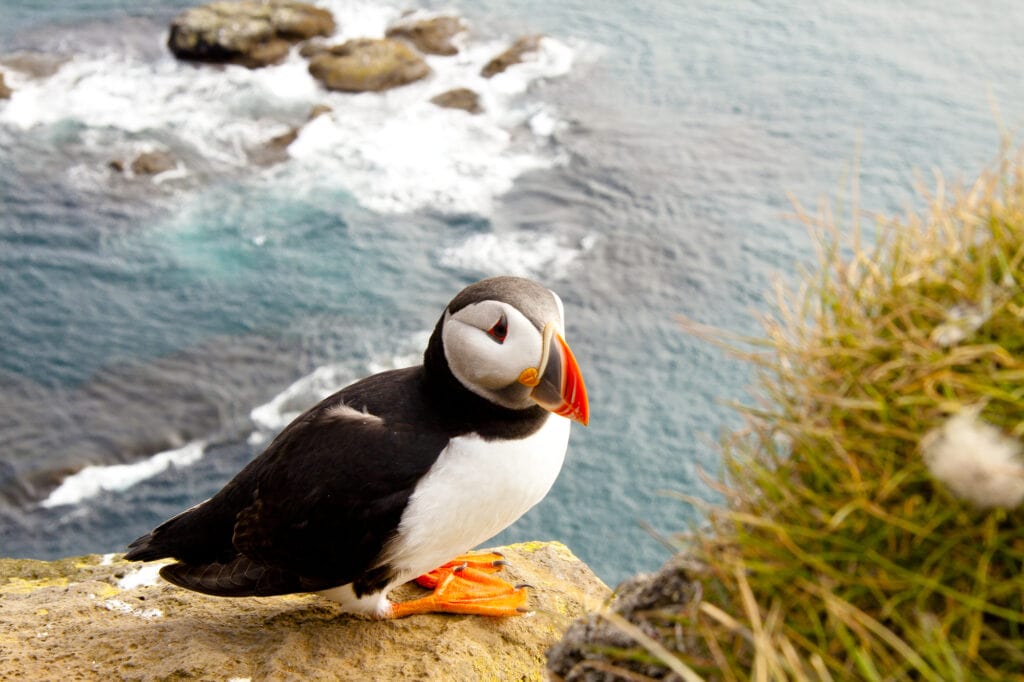
Whale Meat
The first instances of whaling in Iceland can be traced back to as early as the 12th century. This was primarily in the form of spear-drifting, where marked spears would be thrown from open boats to hit the whales, thereby killing them slowly. And the carcasses would be pulled out of the water a few days later, mainly for consumption and harvesting the body parts.
The International Whaling Committee (formed around the 1940s to protect the global whale population) pledged in the early 1980s to stop commercial whaling within the next 6 years. A ban was formulated for this purpose, but Iceland got leeway in the form of a “scientific” whaling project. Subsequently, Iceland resumed the whaling of minks and fin whales in 2006 under a special commercial status. This continued right until 2018, with almost 900 minks killed through the years.

Whaling in Iceland hasn’t ceased completely, with two companies leading the industry. One of them hunts fin whales for exporting to Japan, and the other hunts minkes to supply meat to the local market.
Nevertheless, there has been a drastic reduction in the number of whales being killed now. And this is due to two major factors: the rise of whale-watching as one of the top contributors to the tourism economy and the growing consensus about whales among modern Icelanders.
Wildlife in Iceland and sustainable tourism
Hákarl – Fermented Shark
The most famous food in Iceland and one that many foodies are curious to try is Hakarl, also known as fermented shark meat. Hákarl is a traditional dish in Iceland where the Greenland shark is prepared and fermented in a sand pit. This fermenting process was invented to reduce the toxicity of the meat and make it possible for humans to consume it.
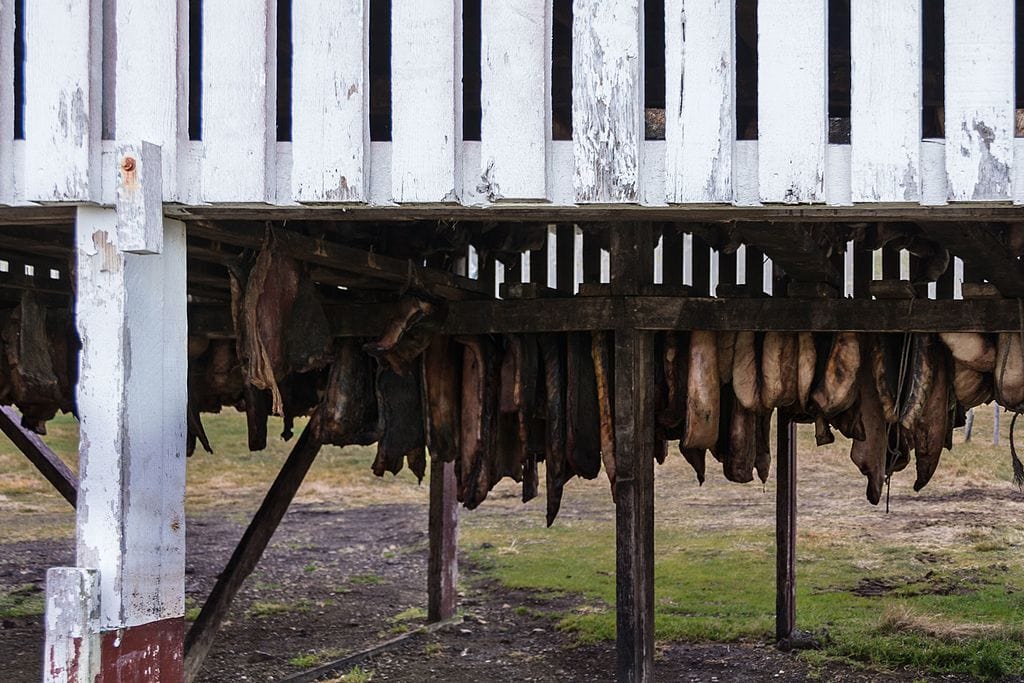
Hakarl is the national dish of Iceland Anthony Bourdain once described it as “the single worst, most disgusting and terrible tasting thing” that he had ever eaten, and Gordon Ramsay couldn’t even swallow it.
Hákarl is often found alongside the Icelandic beverage Brennivin a type of aquavit or Icelandic Schnapps. You take a bite of the shark meat then a good glug of Brennivin and hope the cumin-flavoured liqueur kills the aroma and taste of the rotten shark meat.
Svið – Sheep’s Head
Svið or sheep’s head is another Icelandic traditional food, these days it isn’t as common but you will still find it on some traditional menus. The head is usually smoked and served whole with mashed potatoes.
Horse Meat
Horse meat is another meat that you may find in Iceland. These horses are raised for their meat which is lighter than beef and much more tender. The horses roam the mountain areas of Iceland and are free of hormones and for the most part antibiotics.
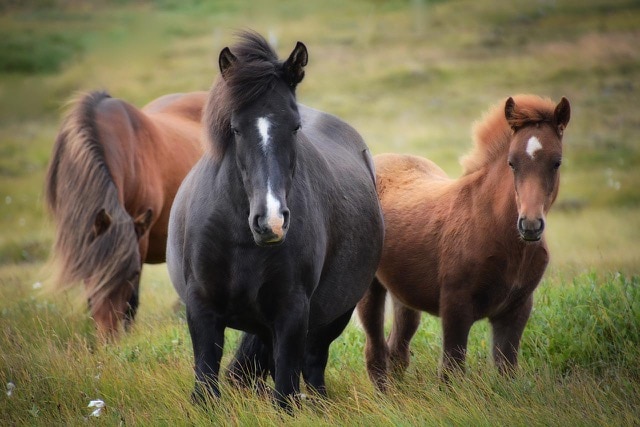
The traditional food in Iceland to try
Icelandic food is known for its fresh ingredients and for playing with the new Nordic cuisine. In times gone by Icelanders had to be creative with their means of food storage. This led to dishes that were smoked, cured, salted or fermented and in some cases preserved in gelatin.
Seafood of Iceland
Trying the seafood of Iceland is an absolute must for anyone visiting this unique island country. Whether you are enjoying some fish and chips in Reykjavik or indulging in some fresh langoustine on a food tour around Iceland, the food culture here is like no other. The seafood in Iceland is incredibly fresh and flavorful, making it a highlight of the country’s food scene. From street food to the best restaurants in Iceland, there is so much fantastic food to try while visiting. Make sure to try the famous Icelandic hot dog and the fish stew made with traditional ingredients.
One of the best ways to experience Iceland’s food culture is by going on a Reykjavik food walk and sampling all the must-try Icelandic foods the country has to offer. The people in Iceland take great pride in their ability to make excellent food using only the freshest ingredients. Everywhere you turn, there is an opportunity to try seafood dishes that are unique to this country. The restaurants in Iceland are top-notch, serving up dishes that highlight the country’s food in the best way possible. Don’t leave Iceland without trying the famous Icelandic hot dog – it’s a true delicacy.
Traditional Icelandic Fish
What is an Iceland traditional dish? In Iceland over 340 species of fish have been recorded in the waters around the country. Whether it’s grilled, fried, boiled, stewed or roasted, fish has been a daily part of the Icelandic people’s cuisine for centuries.
The most common types of fish to eat are cod, haddock and salmon, but you will find many varieties that you can try including Pollock, salmon, trout, and halibut.
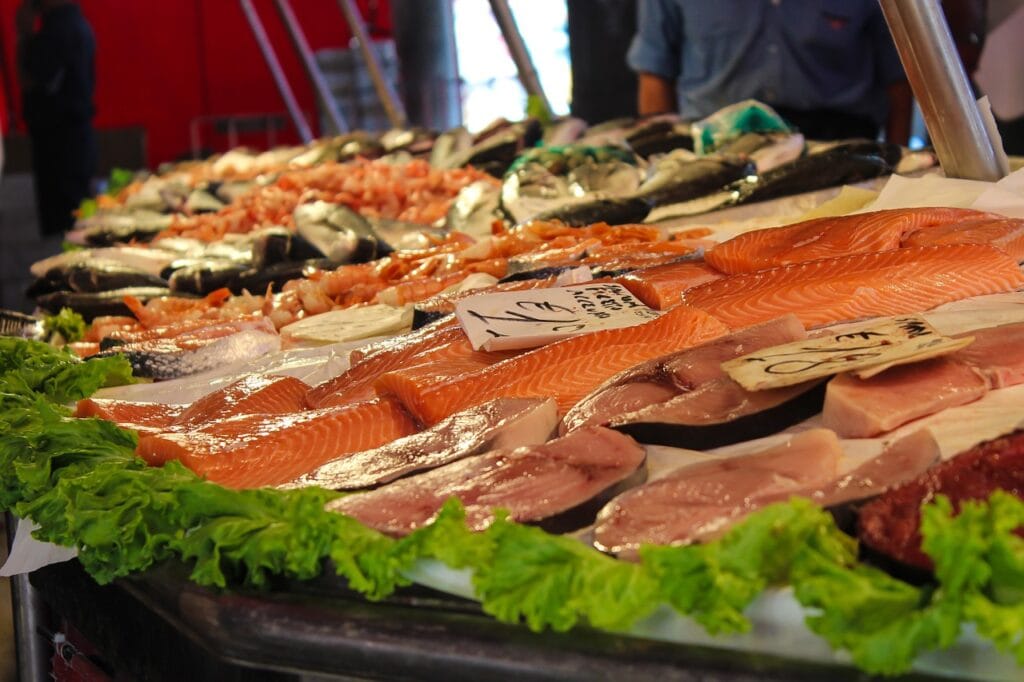
Harðfiskur – Dried Fish Jerky
Harðfiskur is a very common Icelandic food it is a sort of Jerky but obviously made with dried fish instead of meat. It is eaten as a snack straight out of the bag or with butter spread on it. This snack was created using fresh fish mainly haddock or cod which is hung to dry after it has been deboned and cleaned.
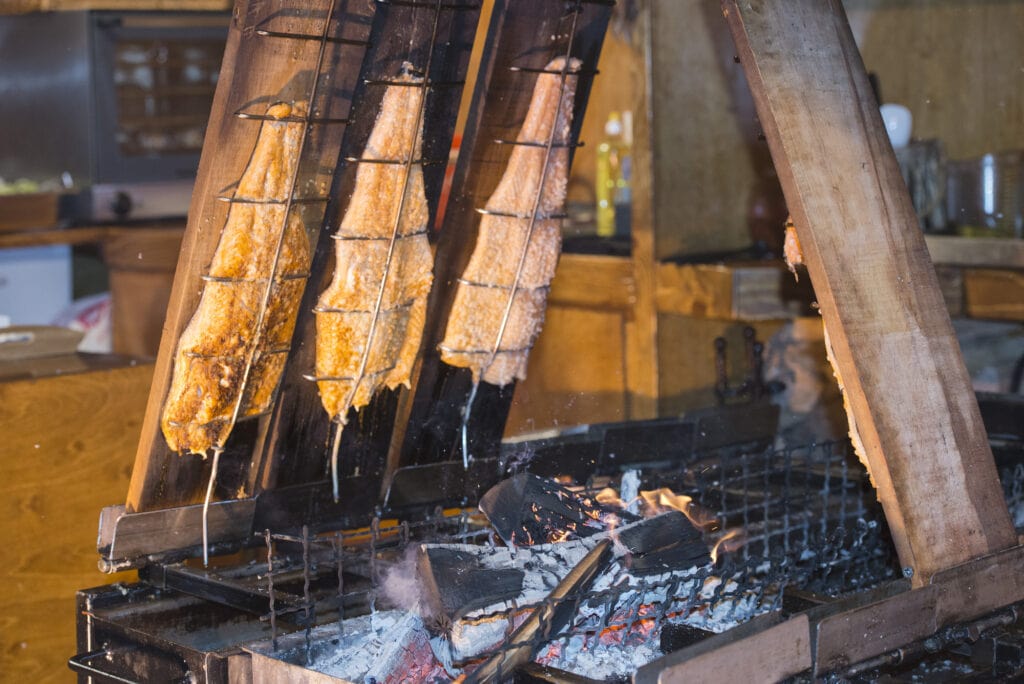
Traditionally, the drying was done outside, near the ocean, where winds blow salty air through the product. This method takes about four to six weeks, but thanks to modern technology, the time can be shortened to 36 to 48 hours.
Icelandic fish and chips
The fish is typically fresh as possible, the batter is light and fluffy and served with fried chips and a dip made with skyr, olive oil, and fresh herbs and spices.
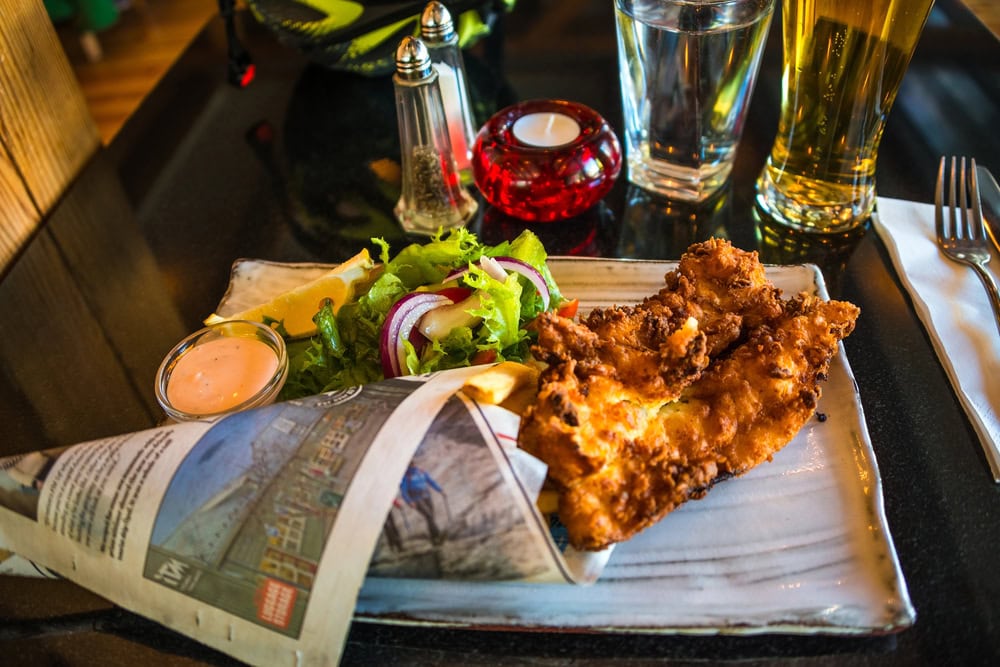
Plokkfiskur – Fish stew
Plokkfiskur is a traditional Icelandic food that consists of cod or haddock filets served in a fish broth with potatoes, onions, milk or cream and seasonings.
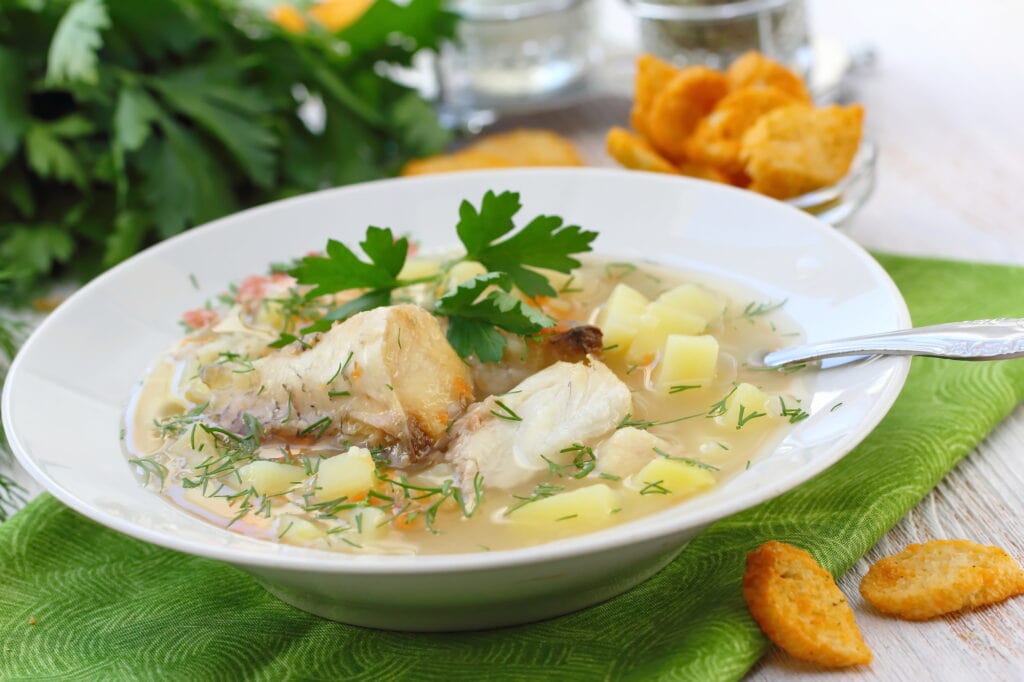
Humar
Humar is what langoustine is called in Iceland, they’re actually a relative of the lobster but smaller growing in size to a maximum of only around 10 inches. You can find it grilled, baked, fried, or even as a pizza topping.
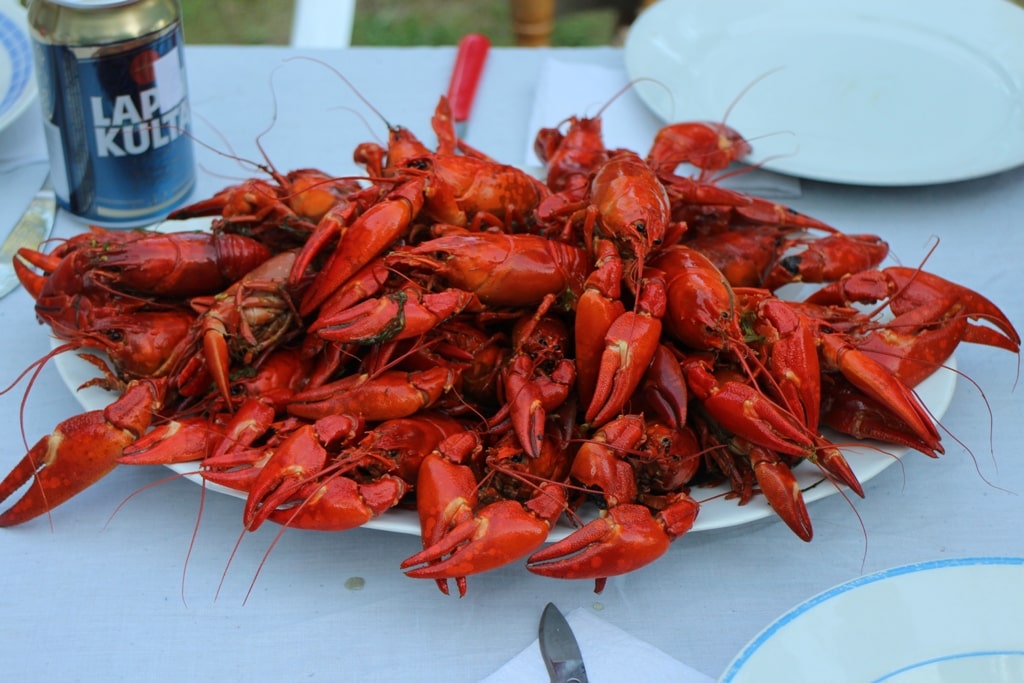
Thorlaksmessa – Fermented Skate
Thorlaksmessa is fermented skate and Icelanders believe that Christmas doesn’t begin until they have eaten Thorlaksmessa. It is a very stinky fish which apparently doesn’t taste as bad as it smells.
Gravlax/Graflax
In Iceland and many Nordic countries, Gravlax is a traditional salt and sugar-cured salmon. Unlike smoked salmon, gravlax is cured by layering the filets with salt and sugar and occasionally herbs and vodka then placing in the fridge to cure for up to 3 days.
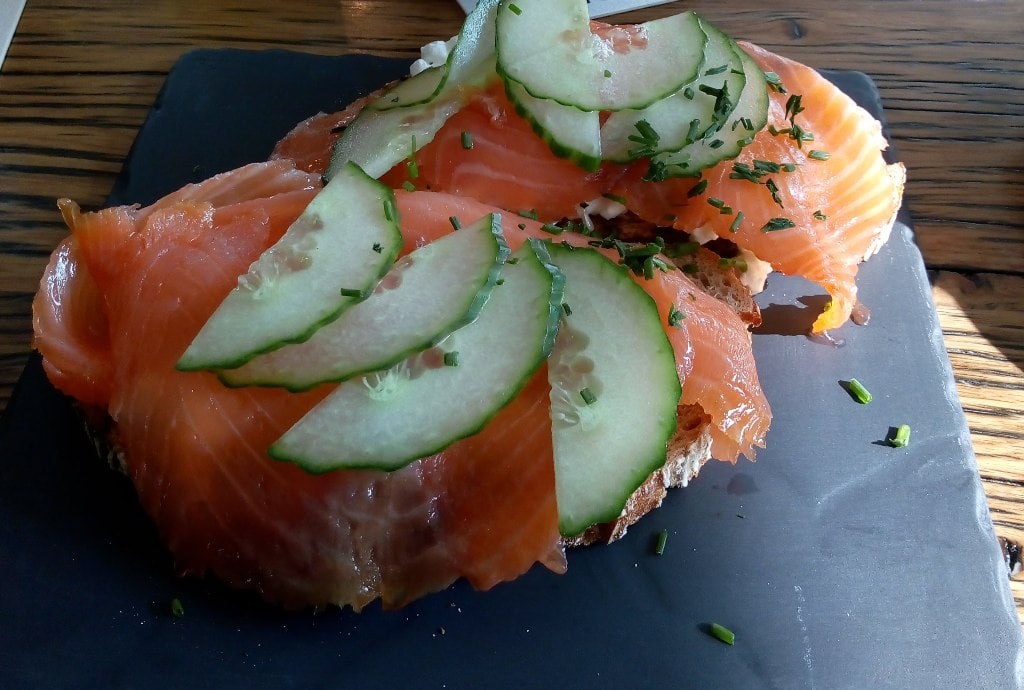
Traditional Icelandic foods – meats
Hrútspungar – ram’s testicles
Hrútspungar is an Icelandic delicacy they are simply pressed and then covered in whey before being boiled, or they are pressed and set in gelatin similar to pâté and served with crackers as a snack.
Pylsur – Icelandic hot dog
Bill Clinton claims these are the best hot dogs in the world and they can be found all over Iceland. The famous place for a Pylsur in Rekayvik is Bæjarins Beztu Pylsur, which has been serving its famous hot dogs since 1937.
Made from lamb, beef or pork, the hot dogs are served with toppings such as mustard, ketchup, deep-fried onions, raw onions and a creamy remoulade. If you can’t decide what to have on your pylsur, simply say “eina með öllu”, which means “one with everything”.
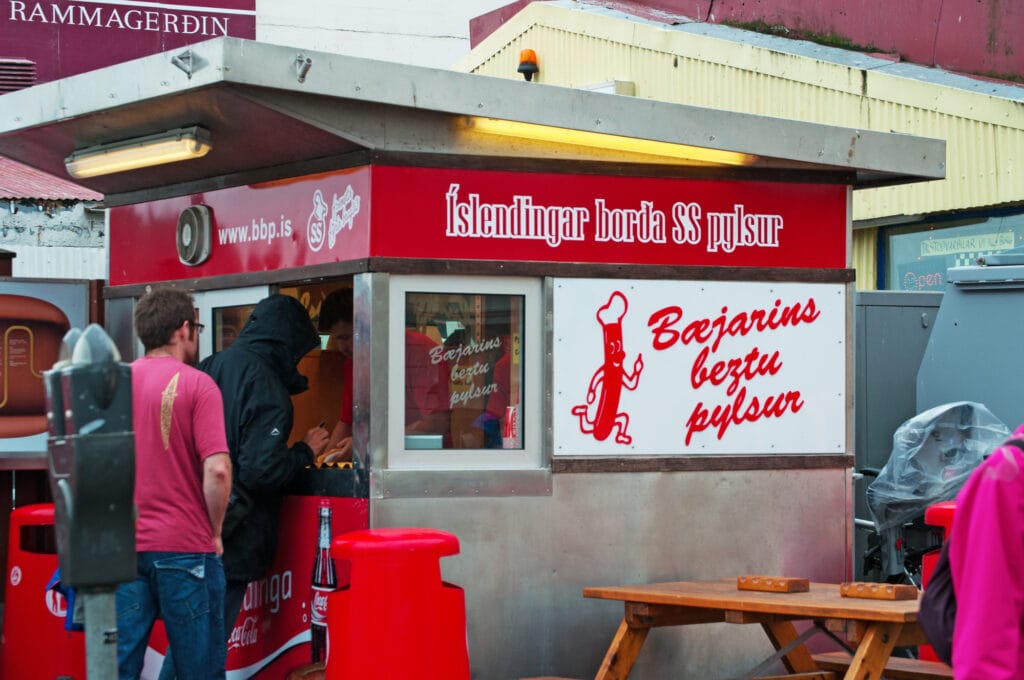
Icelandic lamb
The flavour of Iceland lamb is very different from lamb elsewhere in the world and is said to taste more venison-like.
Icelandic lamb is a wonderfully flavorful, exceptionally lean meat from animals raised with no antibiotics, ever and no added hormones. Pesticides and herbicides are seldom used in Iceland where the climate naturally protects the land.
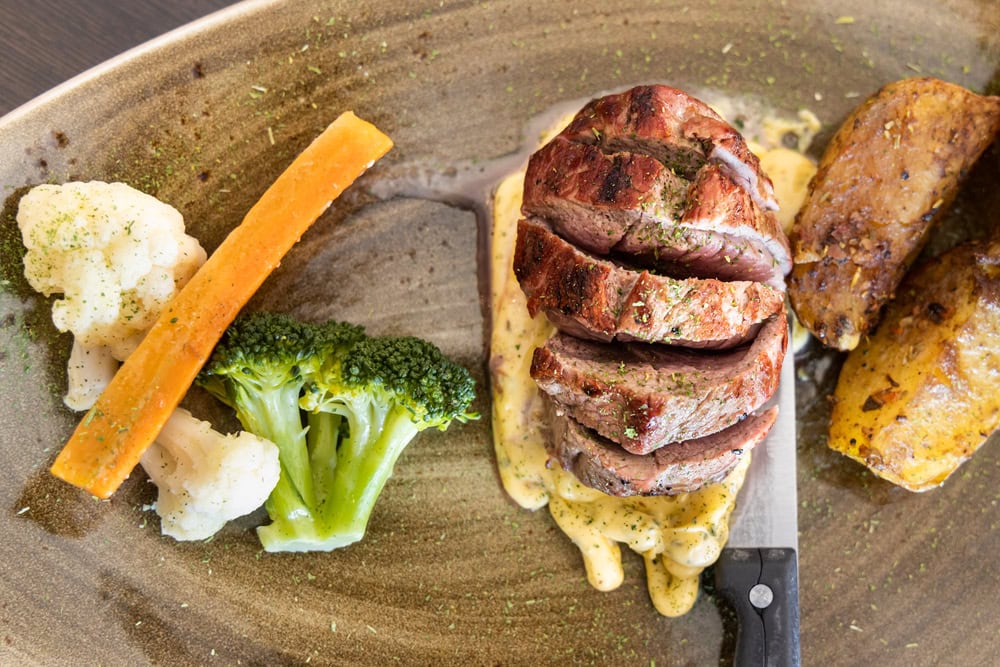
Kjötsupa – Lamb soup
Kjötsúpa is a hearty lamb or mutton soup a very simple dish with root vegetables such as carrots, potatoes, turnips and onions. The long slow cooking time and the bone-in meat braising in the sweet veg create a hearty and delicious main meal.
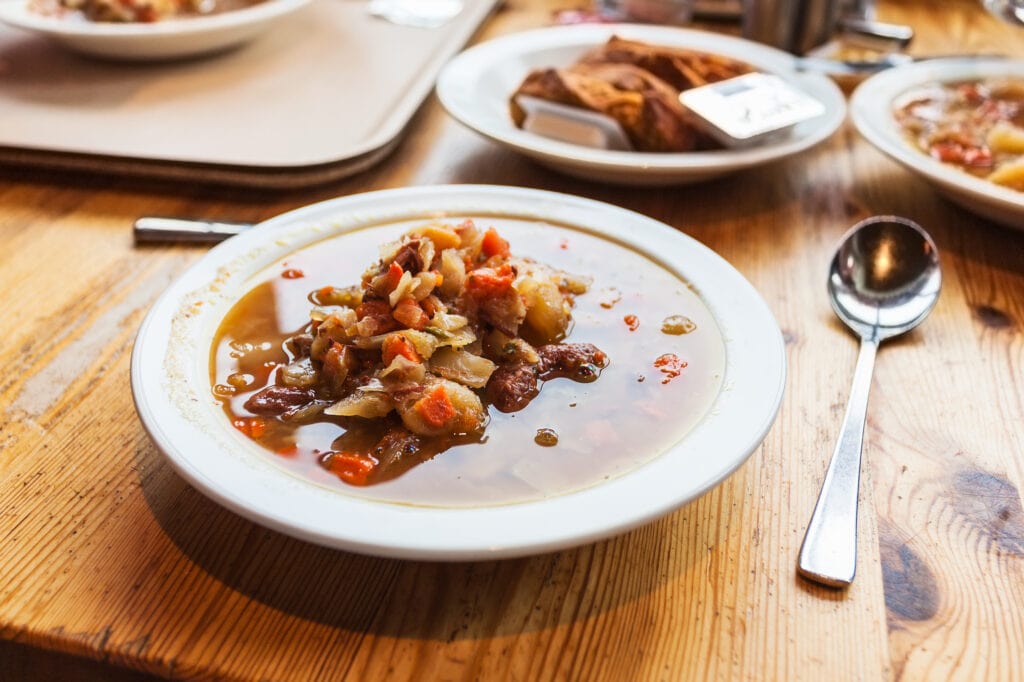
Hangikjöt – smoked lamb
Hangikjöt is usually served on Christmas day and it is a smoked lamb served in open-face sandwiches on Flatbrauð, also known as flatkaka, with a pea and carrot salad or served with cold peas, potatoes and pickled red cabbage.
Skyr
Technically Skyr the iconic Icelandic Yogurt is classed as cheese and in the National Museum of Iceland, you can view 3 jars filled with what look to be grey lumps of stone. This is apparently a horde of Skyr from 1000 years ago.
Packed with protein Skyr comes in a variety of flavours and brands in Iceland and it’s extremely high in protein (even higher than Greek yoghurt), and also packed with vitamins and minerals, and typically lower in sugar, carbs, and fat than most yoghurts.
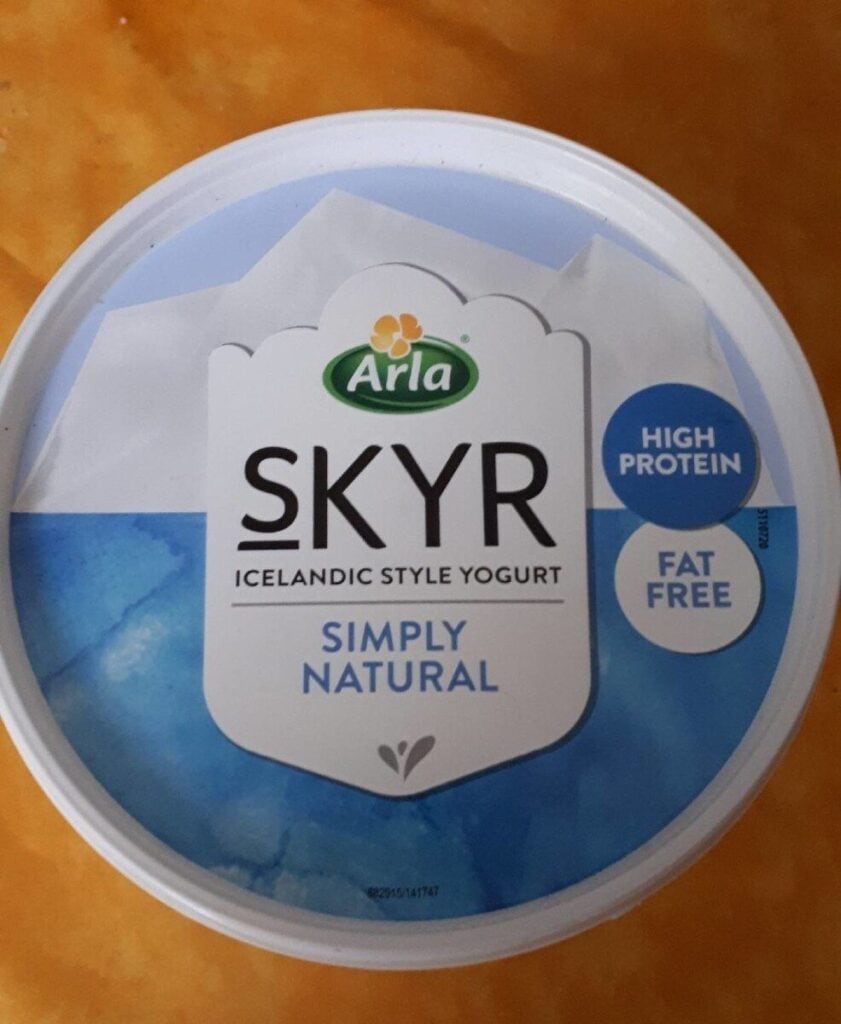
Traditional Icelandic bread
After the Vikings decimated the land by deforestation little could grow in Iceland barring a few root vegetables such as turnips, carrots, cauliflower, cabbage and potatoes but grain just couldn’t survive. In some areas, barley and rye could be grown but little else was available for bread and carbohydrate-rich items. Most of the rye and grains for bread were imported from Denmark in the 17th century.
Rúgbrauð
Rye Bread is eaten all over the Nordic world as well as in Iceland. The Icelandic rye bread is baked in a pot or steamed in wooden casks buried near a geyser and it became known as hot spring bread.
This rúgbrauð is crustless, dark and very dense, usually rather sweet, and keeps for a long time. It is often served slathered with butter and alongside pickled herring, gravlax, or hangikot as an appetizer or snack.
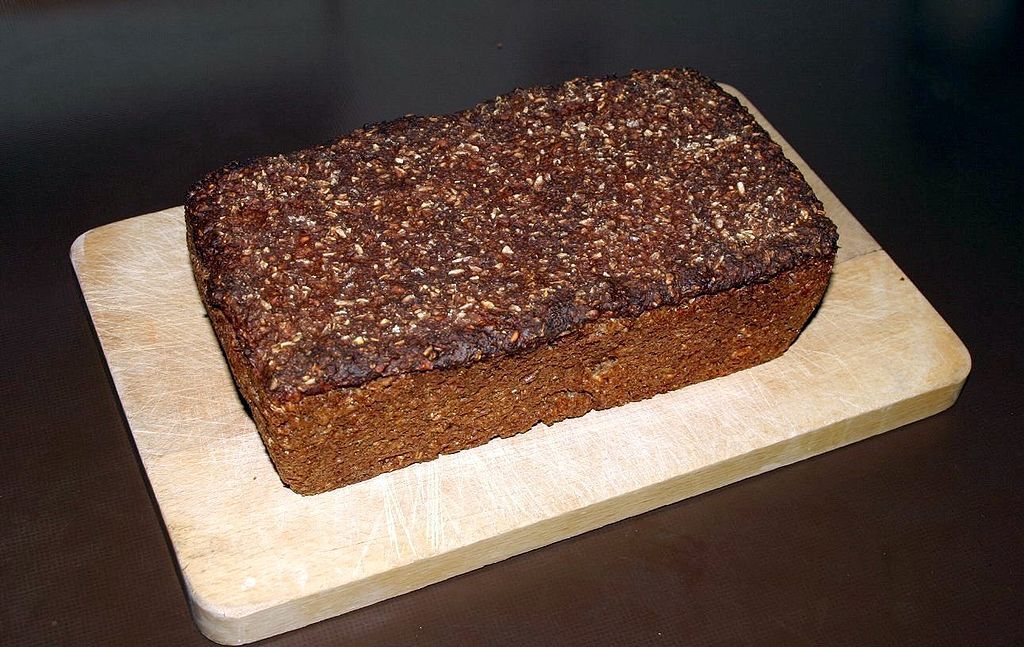
Stale rúgbrauð is often soaked in buttermilk to make a porridge or simper with raisins and lemon and served with whipped cream as a dessert.
The nickname of this bread is þrumari which roughly translates as “thunder bread” or “thunderer”. This is because if you eat too much you get the farts.
Laufabraud – Leaf Bread
Laufabraud,” or leaf bread tends to be a traditional Christmas bread in Iceland. It is a round think flatbread that is decorated with leaf-like patterns and then quickly fried. The bread is served hot with lots of butter during Christmas dinner.
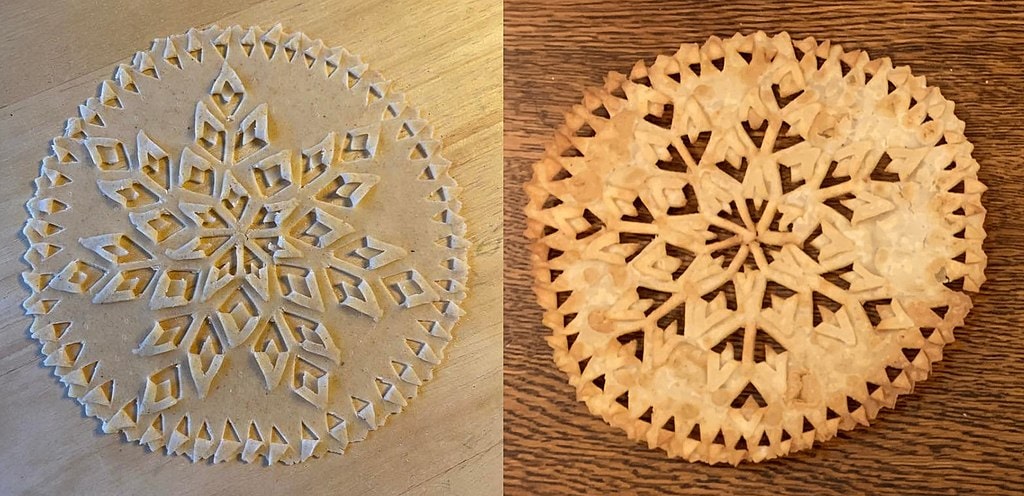
Flatkaka – Rye Flatbread
Flatkaka is a thin, round, rye flatbread with a distinct pattern created by baking it on hot stones or directly on the fire. This created a spotted pattern but these days it is usually baked in a heavy cast iron frying pan.
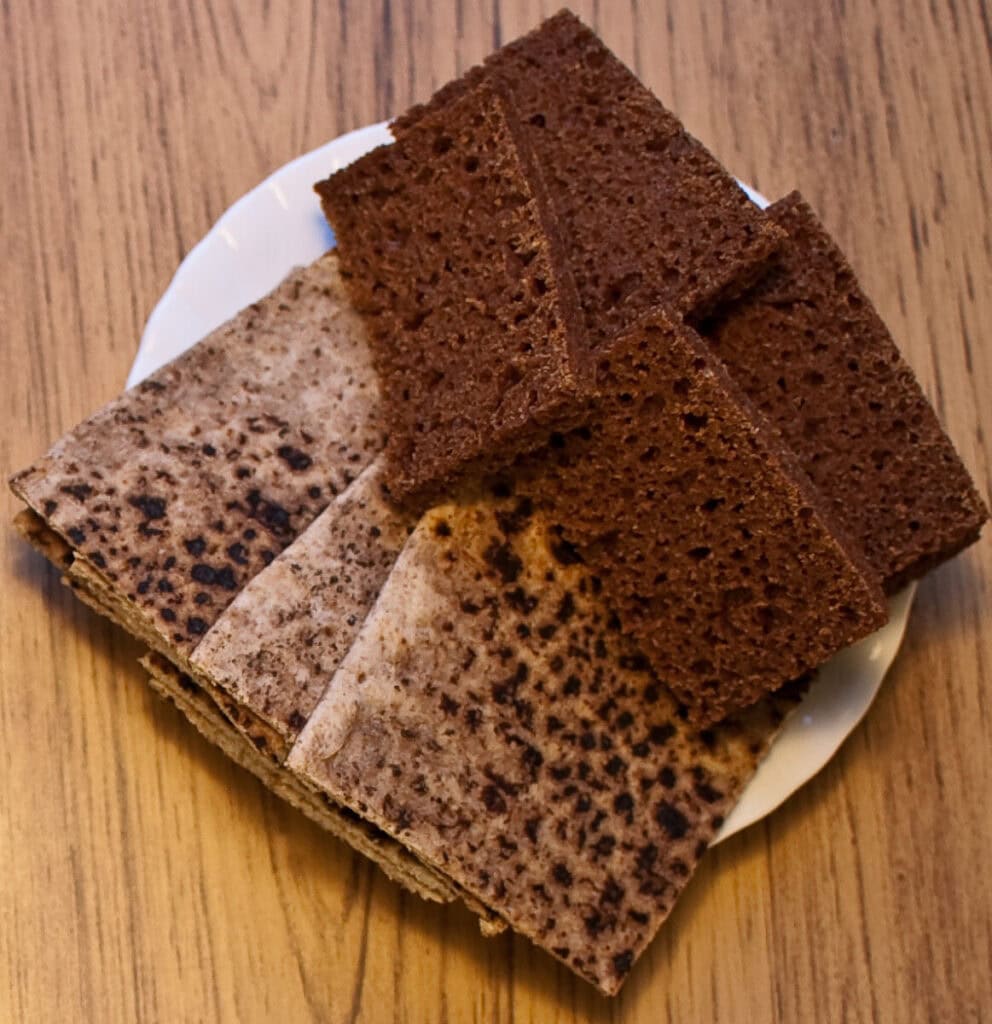
Snudur – Icelandic Sweet Bread
Sugar wasn’t introduced to Iceland until the 19th century so many of the sweetbreads are a relatively new concept. Snudur is a cinnamon-filled bread covered in chocolate, caramel, or sugar glaze.
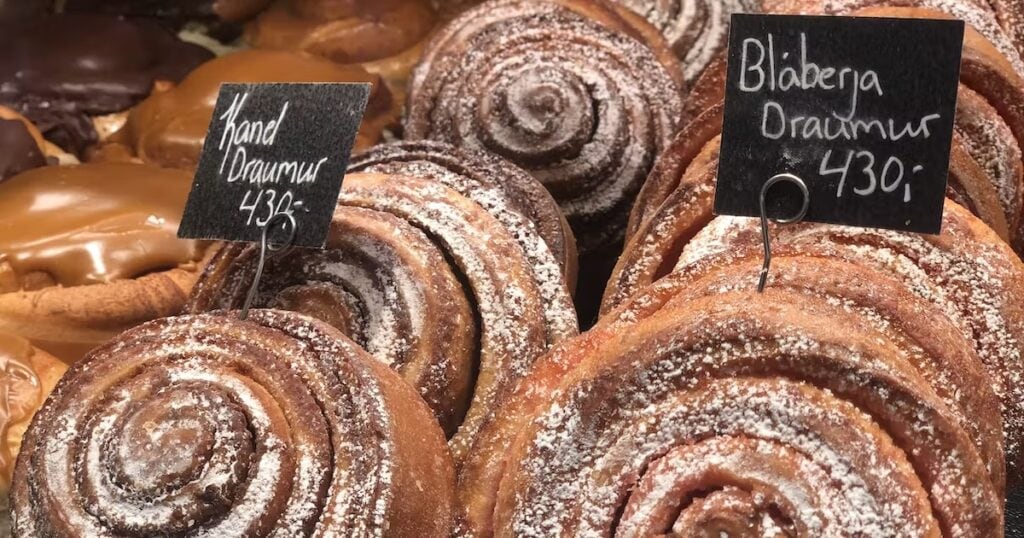
Ponnukokur – Icelandic Pancake
A ponnukokur is a thin, crepe-like pancake usually served rolled up with a good amount of sugar or coated in jam and whipped cream, these are very similar to a French Crepe or a Dutch Pannekoek.
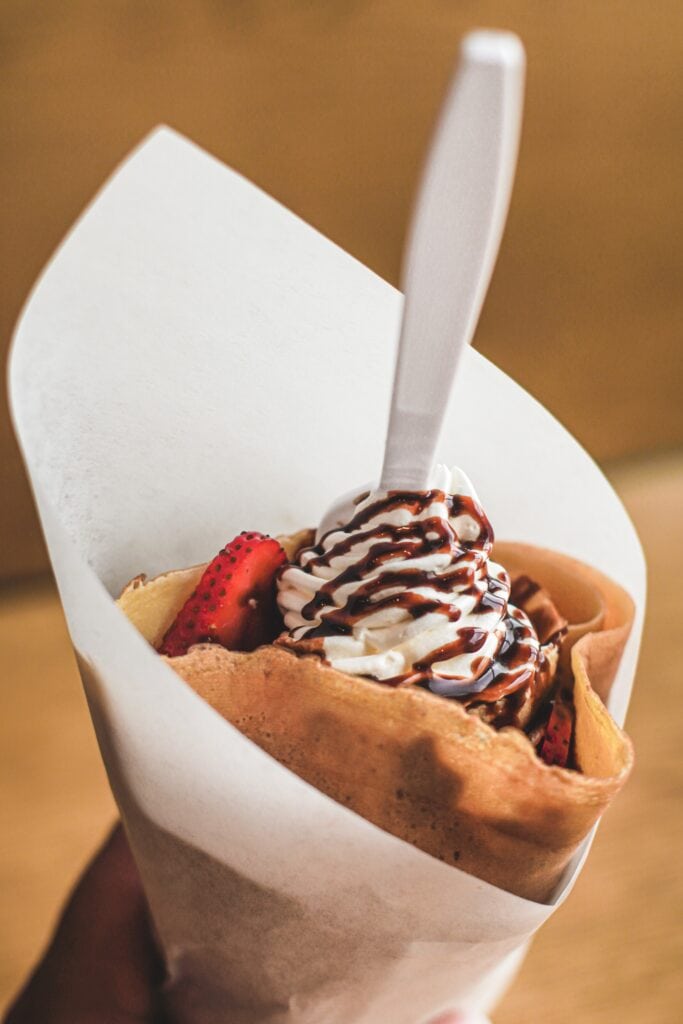
Kleinur – Donut
A Kleinur is an Iceland Donut that is deep fried and when bitten into reveals a sweet fluffy interior.
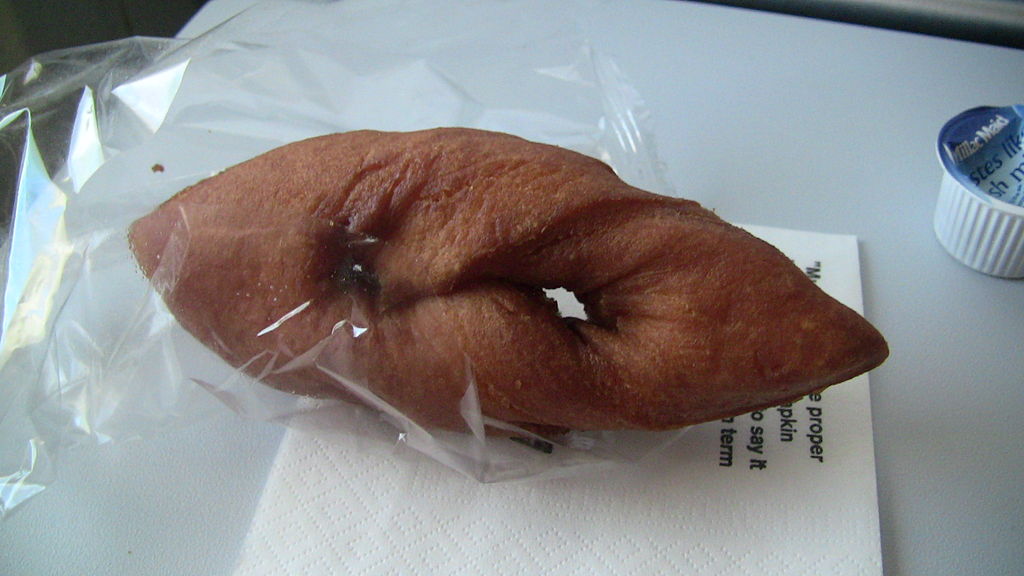
Icecream and Icelanders
Icelanders love ice cream and not only can it be found everywhere it is eaten all year round. There are however some icecreams that are somewhat different in flavour from our traditional North American ones. The first that comes to mind is Licorice.
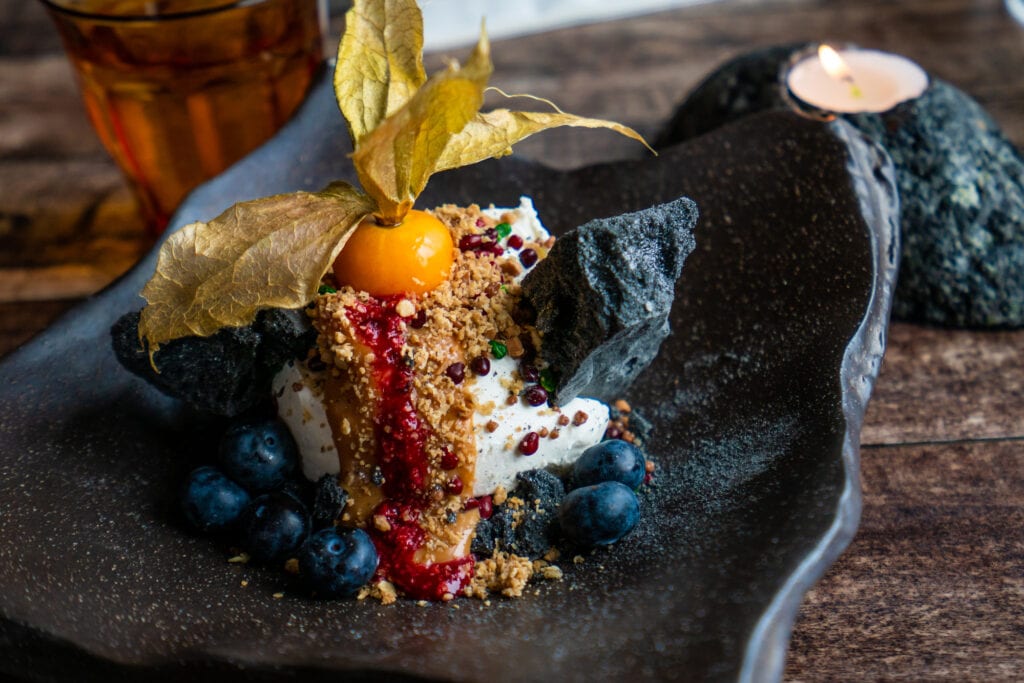
Bragðarefur – Icelandic Icecream
Bragðarefur otherwise known as Tricky Fox is what appears to be a huge cup of vanilla soft serve icecream mixed with any filling or topping of your choice.
Rugbraudsis – Rye Bread Ice Cream
Rugbraudsis is a rye bread ice cream which is unique to Reykjavik and is simply stale rye bread crumbled into pure cream vanilla icecream.
Drinks to try in Iceland
You can’t visit Iceland and try Icelandic food without a good taste of both alcoholic and non-alcoholic drinks in Iceland.
Kókómjólk
A simple but very rich Icelandic chocolate milk drink.
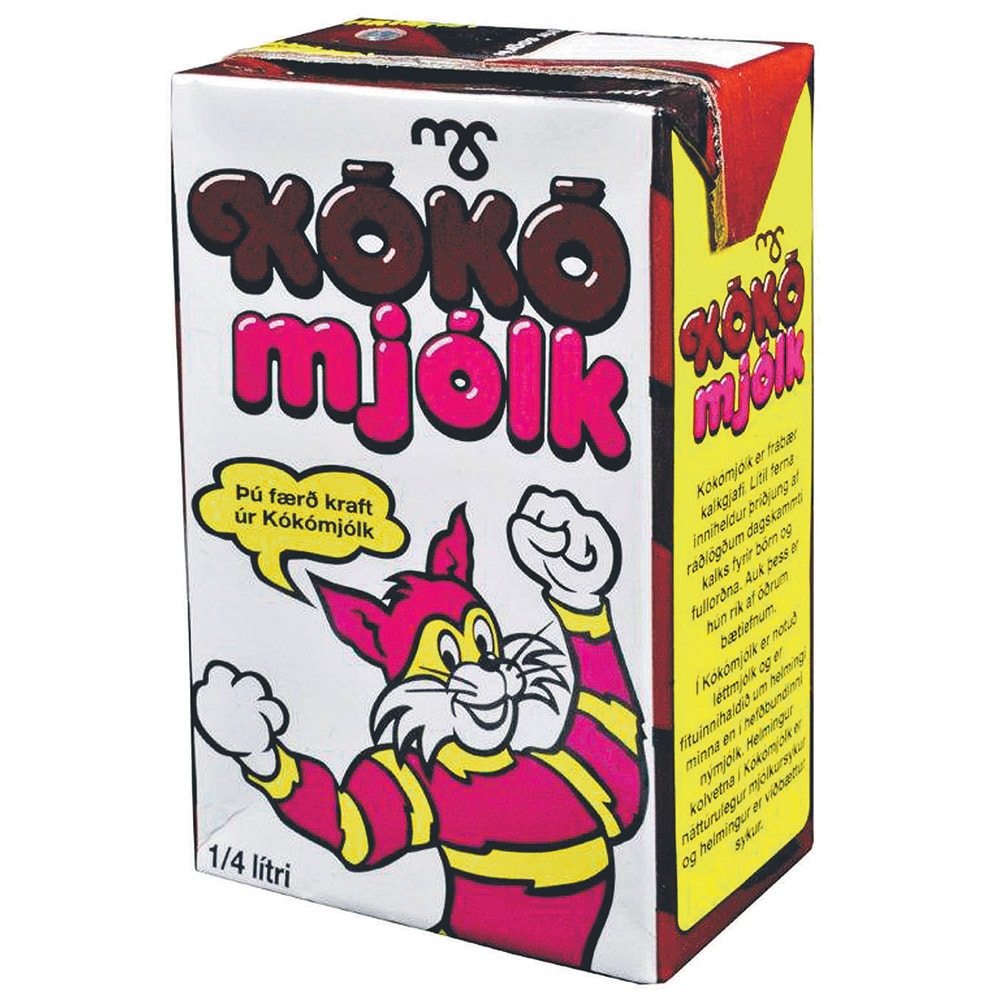
Malt
Malt is an old Icelandic drink that began to be brewed around 1915. Icelanders will tell you it’s a non-alcoholic drink that is somewhat Guinness in flavour and slightly sweet.
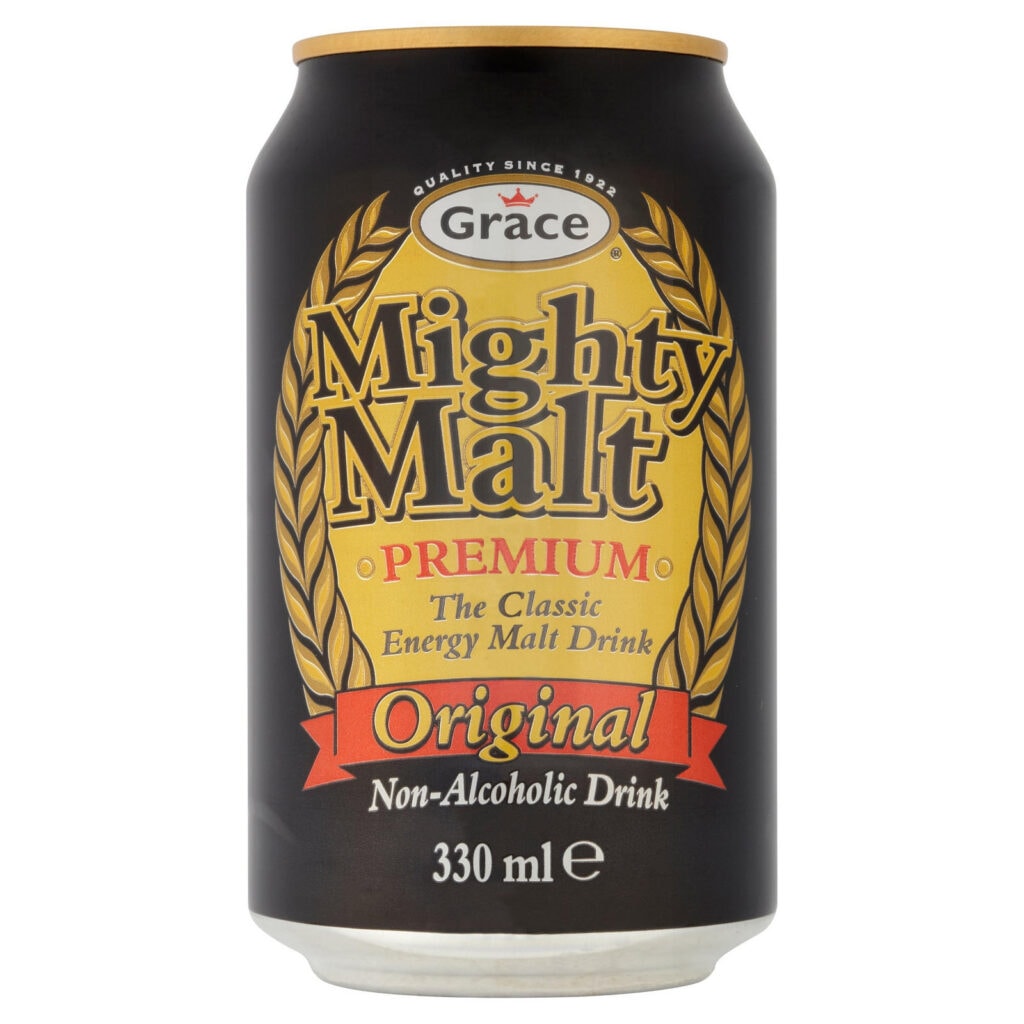
Appelsín
Appelsin is the Icelandic version of Fanta, which is basically an orange soda.
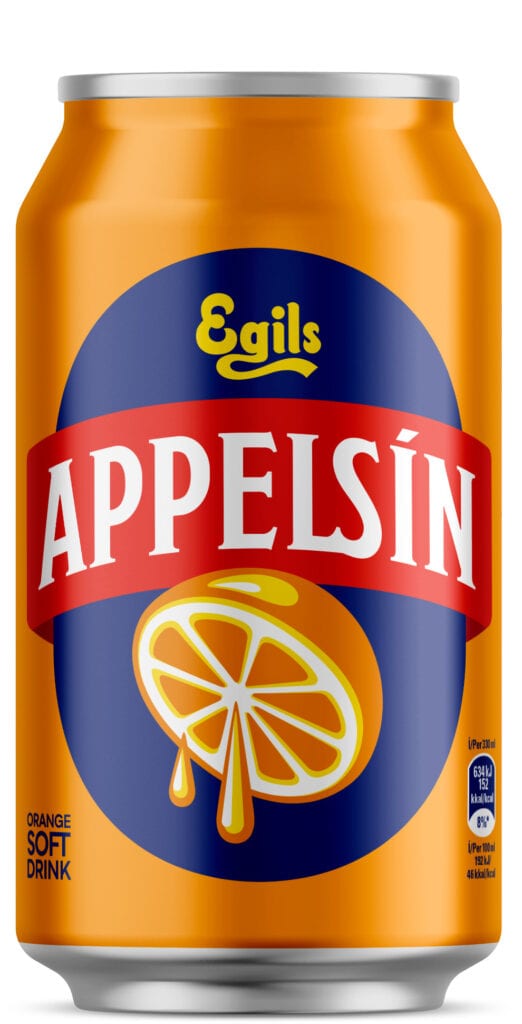
Malt og Appelsin
At Christmastime, a traditional Icelandic drink is called Malt og Appelsín and it’s a mixture of two classic Icelandic soft drinks, Malt, and Appelsín, which is orangeade. You can also buy the mixture already prepared, known as Jólabland, or Christmas mix which comes in big plastic jugs.
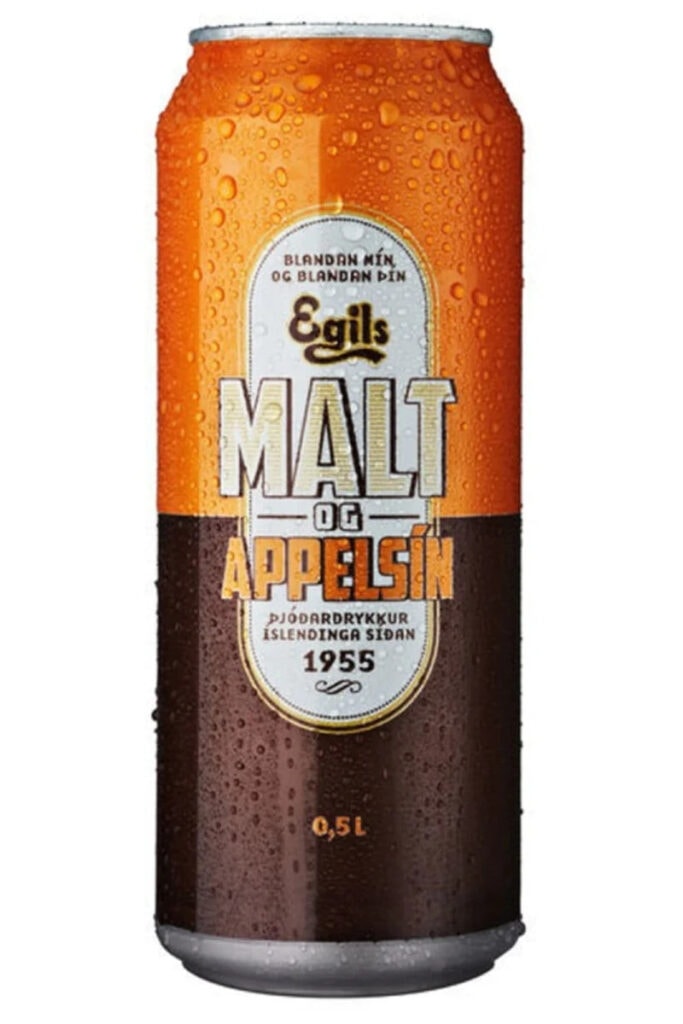
Opal or Tópas
Black liquorice flavoured drinks are served in shot glasses. Every kid in Iceland grew up eating Opal and Tópas, candies which eventually morphed into signature Iceland liqueurs. Opal has a very strong menthol flavour, while Tópas is known for its eucalyptus flavour.
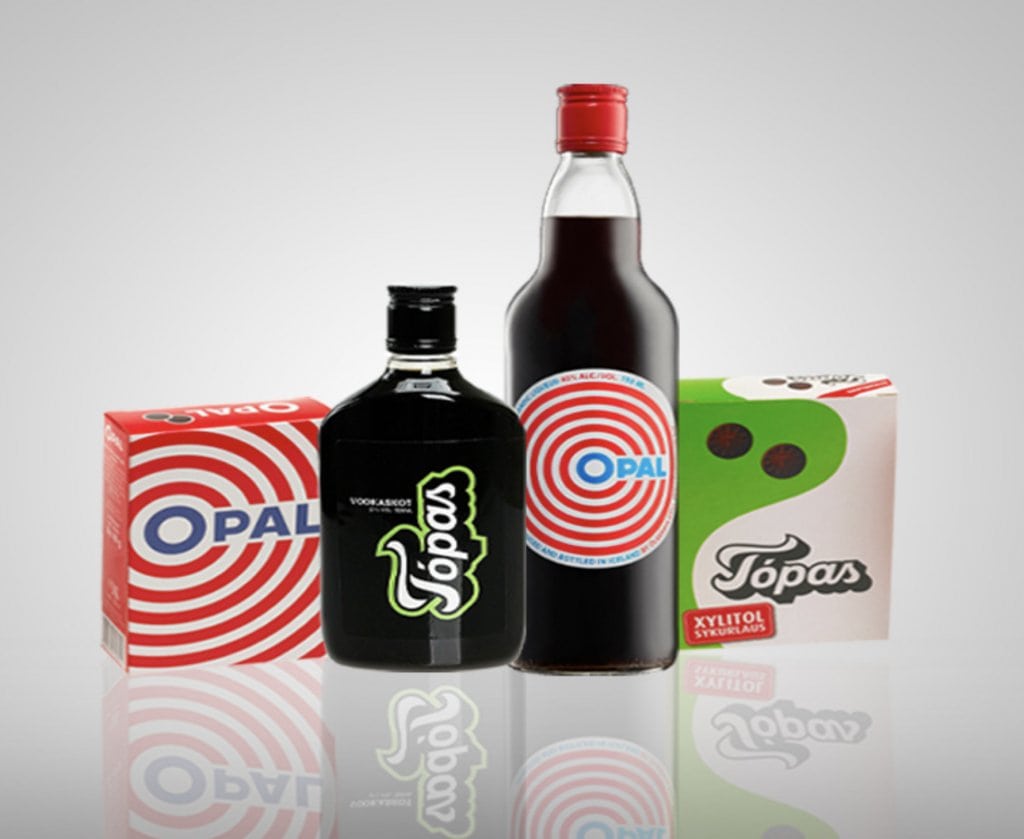
Reyka vodka
A premium vodka distilled in small batches and using the ultra-clear waters of Iceland Reyka has won accolades worldwide for its clean clear taste
Brennivín, Black Death
Brennivin translated into English means “burning wine” and it can be equated to schnapps. It is made from potato mash flavoured with cumin and caraway and is extremely high in alcohol.
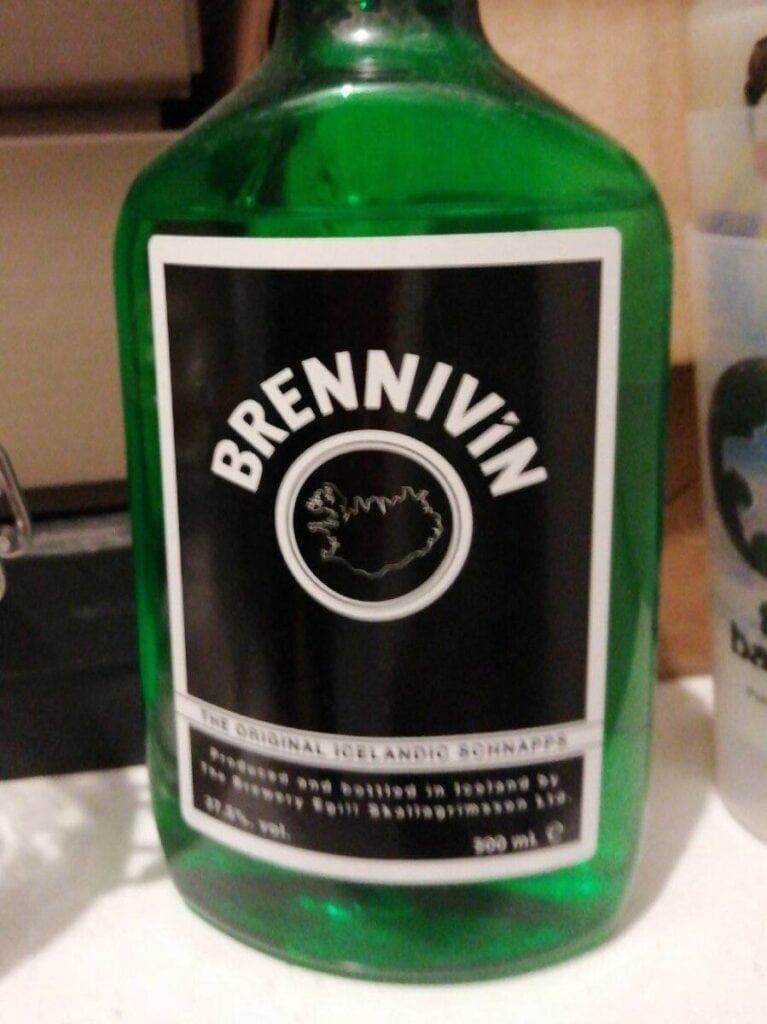
Icelandic beer
Like every other country in the world, Icelanders love their beer and the artisanal brewing scene has been taken to heart by the people. The beers are of course brewed with the best water in the world and many types can be found all over the island.
There you have it 36 traditional food of Iceland – which ones do you plan to try on your visit?
You might also like
UNESCO Intangible food heritage
148 National Dishes of countries around the world
Pin it to save it
